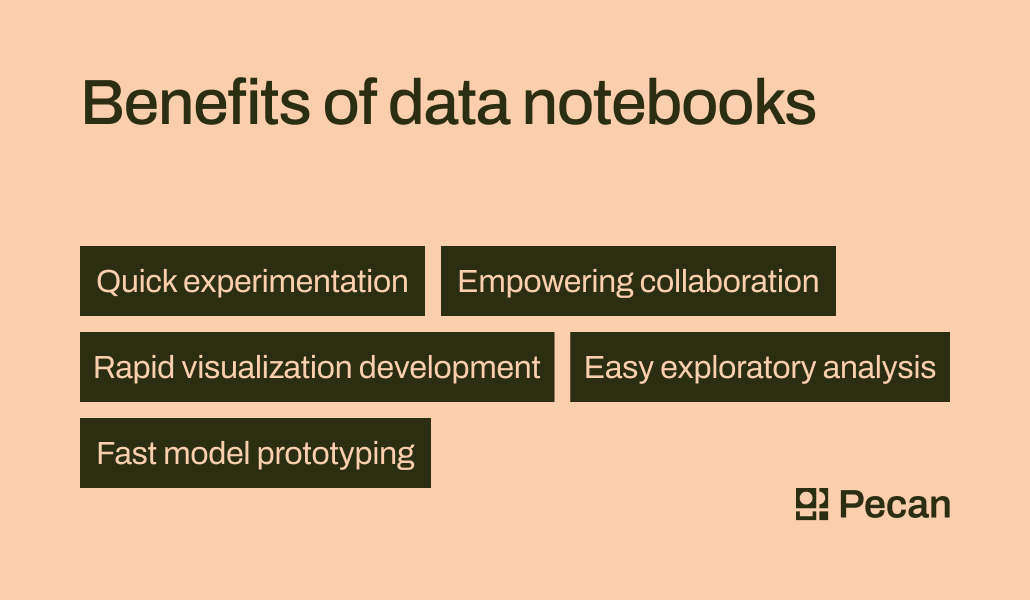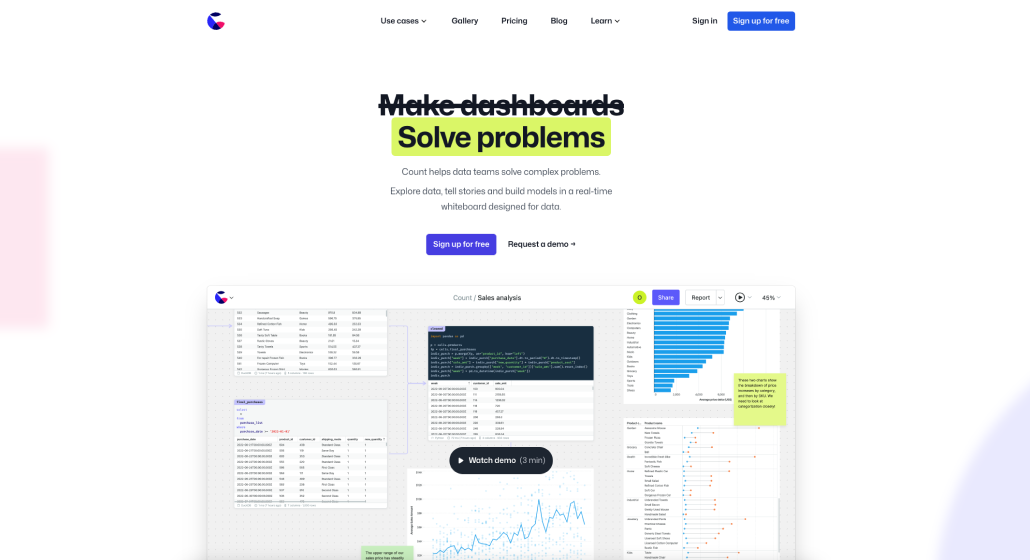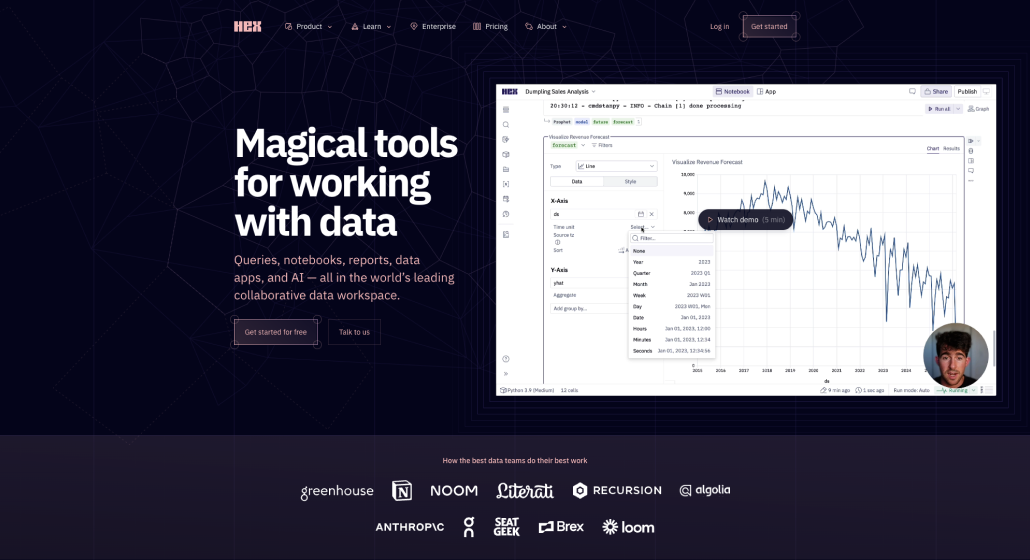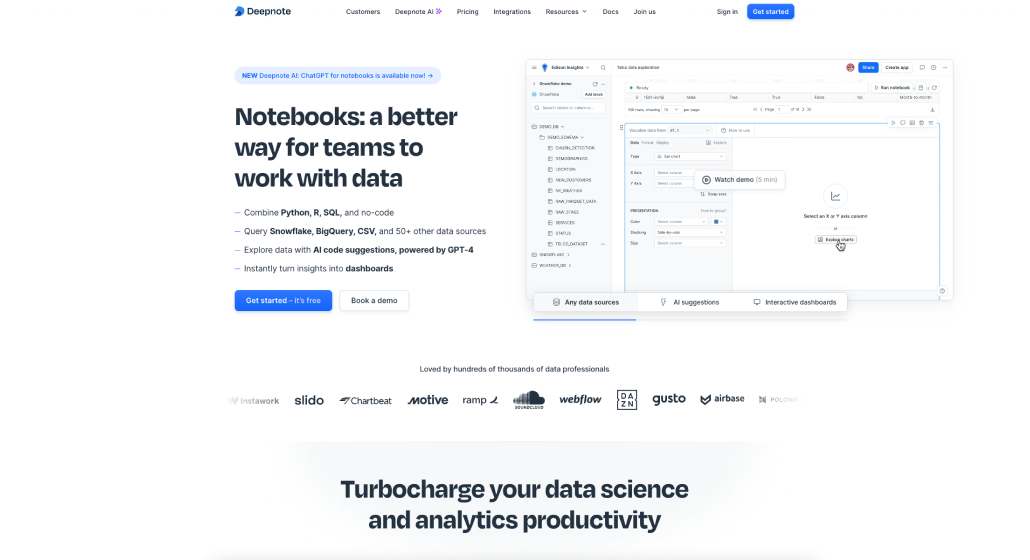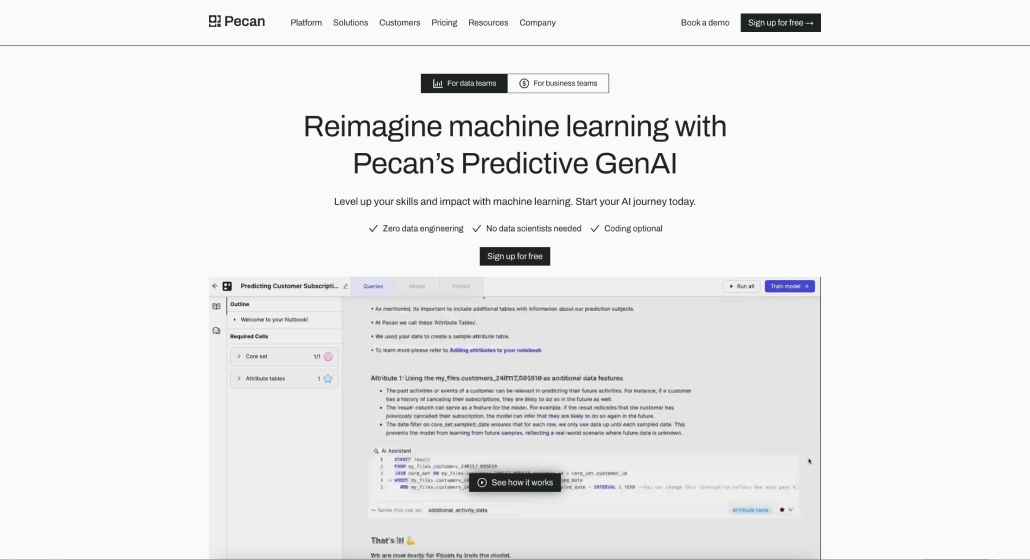In a nutshell:
- Data notebooks have become essential for data workers, allowing for collaboration and interactive coding.
- Jupyter Notebook is a popular choice for data scientists, but requires knowledge of R and Python.
- Count provides a shared work environment for real-time collaboration, but can be overwhelming for complex problem-solving.
- Hex streamlines teamwork with version control and sharing capabilities, but lacks a content management system.
- Deepnote offers real-time collaboration and version control, but some users have reported a slower user experience.
- Pecan incorporates generative AI and low-code predictive analytics, requiring only SQL expertise.
Step into your time machine and calibrate it to the mid-1980s. Data notebooks were just introduced, and since then, they’ve become an indispensable part of data workers’ workflows. Initially, notebooks allowed data scientists to easily collaborate on workflows in one place — whereas before, workflows were performed offline and required coordinating among disjointed solutions.
Today, data notebooks have started to gain traction among other data roles, including data analysts, data engineers, and business analysts, and even across business units. (Take Netflix, for example, which is spearheading the adoption of data notebooks across departments to help business users quickly harness the power of data.)
The core benefit of modern data notebooks is how they facilitate interactive coding — which allows for quick experimentation through sharing code and visualizations, exploratory analysis, and prototyping models.
Data notebooks are the tool of choice for many data professionals.
But some notebooks are better than others — and several can even help you build predictive models without needing to know R or Python. That’s why we’ve created this guide: to help you determine which notebook is right for your team and skill level.
The top 5 data notebooks available today
Jupyter Notebook
Data notebook #1: Jupyter Notebook
What it’s great at: Jupyter is a staple in the data science world. In addition to its core functionality as a web-based UI for writing code and visualizing outputs, Jupyter is great at working with extensions thanks to its modular design.
How it works: This collaborative notebook allows for flexible configurations and the ability to arrange workflows for data science and a multitude of other analytic use cases.
Areas of limitation: Jupyter loads entire datasets to memory, which can create memory limitations and performance issues. You’ll also likely need to know R and Python to build models.
Count
Data notebook #2: Count
What it’s great at: With an infinite canvas, Count is great at providing a shared and dynamic work environment for real-time collaboration. Count lets you build hundreds of queries without any performance loss and also complements your other BI tools by reducing dashboard clutter.
How it works: Count provides a giant whiteboard space to make collaboration easy and visually appealing.
Areas of limitation: You can’t self-host if you’re using Count; you must use their fully managed offering. Also, due to its massive size, it’s not the best for complex problem-solving, as you can easily lose sight of the forest for the trees.
Hex
Data notebook #3: Hex
What it’s great at: Hex streamlines teamwork with version control, sharing capabilities, and real-time collaboration. It combines knowledge management, data apps, and coding notebooks to democratize data within an organization. Hex can use SQL, Python, and R together or separately.
How it works: Hex is a collaborative analytics and data science notebook. Users are able to write reports, publish work both externally and internally with drag-and-drop layouts, and track statistical analyses.
Areas of limitation: According to reviews, there is no content management system, and code-completion improvements are needed.
Deepnote
Data notebook #4: Deepnote
What it’s great at:
Real-time collaboration and version control with an intuitive user interface.
How it works: A web-based environment empowers users to create, edit, and run Jupyter notebooks. Designed for simplicity and collaboration, Deepnote allows team members to work on the same notebook simultaneously through the cloud, making it an effective tool for collaborative data analysis and model development.
Areas of limitation: Some reviews have expressed that Deepnote can have a slower user experience.
Pecan AI
Data notebook #5: Pecan AI
What it’s great at: Incorporating generative AI and low-code predictive analytics into a collaborative data notebook — which doesn’t require R or Python, only SQL.
How it works: Integrated generative AI capabilities help you quickly understand your business problem, predictive question, and which model is best. Then, Pecan automatically builds your model training dataset through simple SQL. You can dig into the specifics of the code, enhance your model with additional data, and even ask the AI assistant anything — like what’s happening in portions of the code or what happens if you tweak a certain parameter — to facilitate easy comprehension and execution.
Areas of limitation: Only uses SQL (but on the plus side, that means no other coding language expertise is needed).
Start building machine-learning models in minutes with the right data notebook
Data notebooks have steadily evolved over the past 40 years. Pecan's Predictive GenAI marks another major milestone in these tools, giving every data worker access to machine learning and predictive models. Did we mention you’ll literally save hours?
Ready to see how Pecan’s data notebook can help you build models in minutes? Watch this quick video or sign up for a guided free trial.
